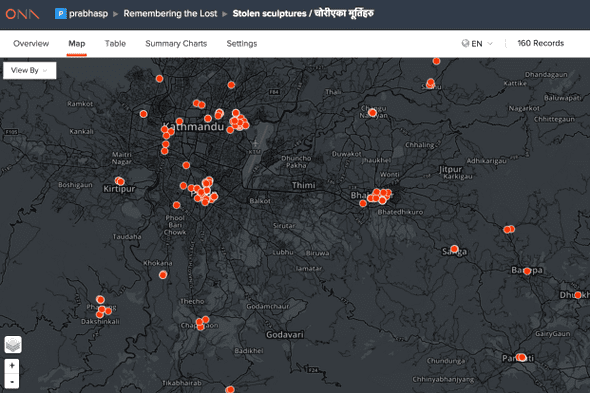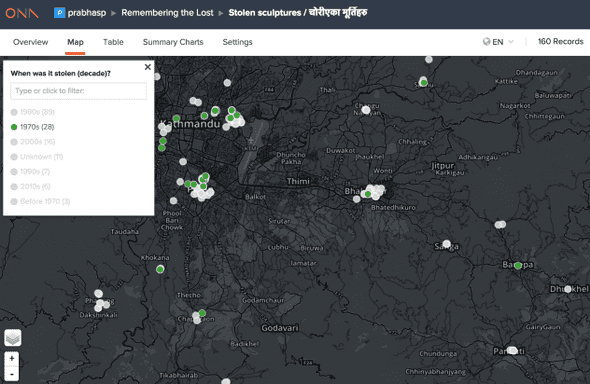Ona.io
The Context
Ona had just launched as a new company, and were re-building Formhub with a highly decoupled architecture through a data API. Formhub.org demand had outgrown its stature, and the initial architecture it was built with was having scaling issues. At the time I joined, pre-launch, the team had replicated much of the back-end and had not started on the front-end.
The brief for me was to build a sophisticated dataview for Ona.io, drawing lessons from Formhub’s map view, and creating new ways to visualize and browse data through tables and charts.
The Product
I wrote the initial implementation of Ona’s front-end data view, starting from 0 lines of code and building the codebase to 200K lines of code. After spending a week learning clojure, I dove in, and built the map view (on top of leaflet.js), the chart view (on top of d3.js), and the table view (on top of slickgrid.js).
I created automatic map-based visualizations of structured data collected in Ona.io. Until then, most map-based web software only offered heatmaps and “pop-ups” as a way to explore data, requiring one click at a time data exploration. I created new ways to automatically visualize structured data, drawing from scatterplot visualization techniques and my previous work with the amazing ggplot2. As a result, if you were collecting data about sculptures stolen from Kathmandu, Nepal, you could visualize which decade a sculpture was stolen, to explore spatial patterns.
Tech Stack
R,ggplot2, andd3.jsfor exploratory visualizationom,clojurescript, andcore.asyncchannels- The back-end was built on
ring, andcompojure. I only made occassional changes here.
Learnings
-
I learned clojure, clojurescript, and React. All of these were a first for me, and I immensely enjoyed being able to use paradigms like functional programming and immutability to build front-end software.
omandclojurescriptalso allowed me to work with design patterns now popularized byreduxandimmutable.js, before those technologies even existed—I used reducers, actions, and the pattern of using a single-source of immutable data triggering DOM updates via selectors / cursors for most of the app. -
I learned how to build a sophisticated front-end starting from scratch. My previous projects had drawn heavily on existing templates and frameworks, and it was refreshing and very educational to code all the divs and their associated css by hand, with minimal use of frameworks.
The Impact
The front-end I wrote for Ona is still very much in use today, two years after I stopped working on it. Despite two years of iteration, I still have the largest number of lines contributed to the front-end code :) The front-end data view is one of Ona’s most popular selling points.

He has designed products, developed software, and created collaborative efforts across five continents, and currently lives in the SF Bay Area.

